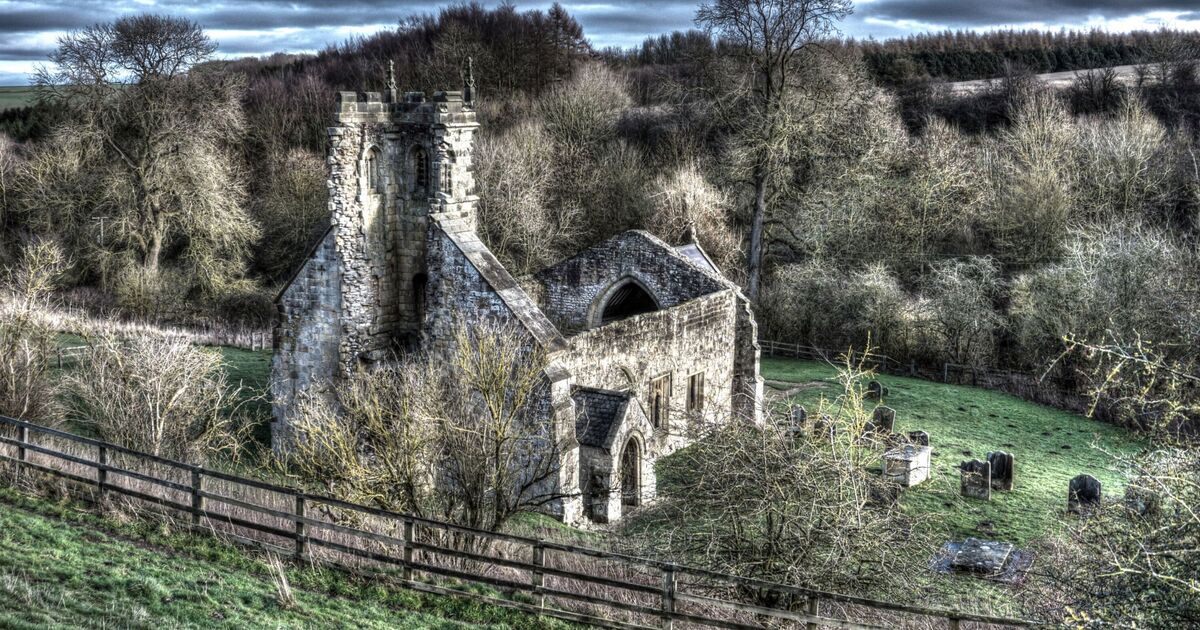Across Britain, remnants of medieval grandeur can be found in towns and cities that once thrived as bustling hubs of trade, politics, and daily life. Places like Warwick, Oxford, Chester, York, Ludlow, and Durham preserve fragments of their storied past, drawing millions of visitors each year.
Despite their historic charm, these settlements have undergone centuries of transformation, with modern buildings, renovations, and urban expansion reshaping their landscapes.
However, one village stands apart—a place where time seemingly stopped, leaving behind an almost untouched medieval relic hidden in the countryside. That village is Wharram Percy, an abandoned medieval settlement in North Yorkshire that has captivated historians and archaeologists for decades.
Unlike the medieval towns that evolved with the passing centuries, Wharram Percy was mysteriously deserted in the 16th century, its reason for abandonment still puzzling experts today.
The settlement had been occupied for at least 600 years, dating back to the 9th or 10th century, and remained inhabited until the early 1500s. According to English Heritage, it is “undoubtedly the most famous” deserted medieval village in Britain.
Perched on the western edge of the Yorkshire Wolds, near the market town of Malton, Wharram Percy was once a thriving community. Archaeological evidence suggests that at its peak, the village contained around 40 houses, a village green, two water mills, two manor houses, and a church, which remains one of the site’s most striking features despite its missing roof.
For more than six decades, archaeologists have been studying Wharram Percy, using advanced techniques to uncover insights into medieval rural life. Their work has provided a remarkable window into the daily lives, diets, and burial practices of its former residents.
While many artefacts have shed light on the past, one discovery made in the 1960s sent shockwaves through the archaeological community. Excavations unearthed a mysterious burial pit, located some distance away from the churchyard where the villagers should have been interred. This eerie find was explored in the Smithsonian Channel documentary, Mystic Britain, where presenter Clive Anderson remarked: “It holds a secret so grisly you’ll scarcely be able to believe it.”
The pit contained over 100 human bones, belonging to at least ten individuals. What made this discovery so unsettling was the unusual location of the remains—far from the churchyard, where Christian burials were expected.
Initially, researchers speculated that the bones predated the medieval period, possibly belonging to the Romans or even prehistoric settlers. However, when the remains were subjected to radiocarbon dating, the results revealed that they were indeed from the medieval era.
Dr Stuart Wrathmell, an archaeologist specialising in medieval settlements, described the find as deeply unusual: “You would think most people in the village would be buried in the churchyard, not out here in the farmstead.”
This off-site burial has led to speculation about whether these individuals were outcasts, victims of disease, or even subjected to ritualistic practices. Some theories suggest that fear of the undead or supernatural beliefs might have influenced the way these bodies were treated—practices not uncommon in medieval England.
The village takes its name from the Percy family, one of the most influential noble dynasties in medieval England. The Percys were powerful landowners who played a key role in the Wars of the Roses and had close ties to both the English monarchy and rival noble families such as the House of Neville.
However, the Percy lineage itself had foreign origins. The family descended from a French noble who accompanied William the Conqueror during the Norman invasion of 1066. Over the centuries, the Percy name nearly died out twice in the male line but was later revived through strategic marriages, most notably when Joscelin of Louvain took the surname Percy in the 12th century.
Due to its exceptional preservation, Wharram Percy has become a testing ground for pioneering archaeological methods. The first systematic digs began in the 1950s, but it wasn’t until 2002 that Historic England launched an extensive investigation using modern scientific techniques. They collected and analysed skeletal remains from the churchyard, revealing groundbreaking details about medieval life.
In 2004, their findings were published, offering new insights into:
- Dietary habits: What people ate, including evidence of malnutrition and seasonal food shortages.
- Childhood health: Growth rates and patterns of disease in children.
- Women’s lives: The duration of breastfeeding and the effects of maternal nutrition.
- Disease prevalence: Common ailments like osteoporosis, arthritis, and tuberculosis.
These results were cutting-edge at the time and have since influenced how archaeologists study medieval settlements across Europe.
Today, Wharram Percy stands as a fascinating relic of England’s medieval past, with its grassy ruins offering visitors a rare glimpse into a lost world. Managed by English Heritage, the site is freely accessible, making it one of the best-preserved examples of a deserted medieval village in Britain.












